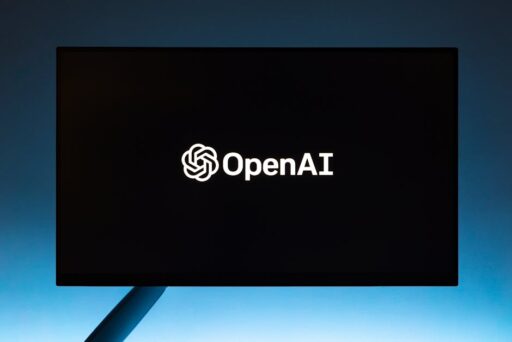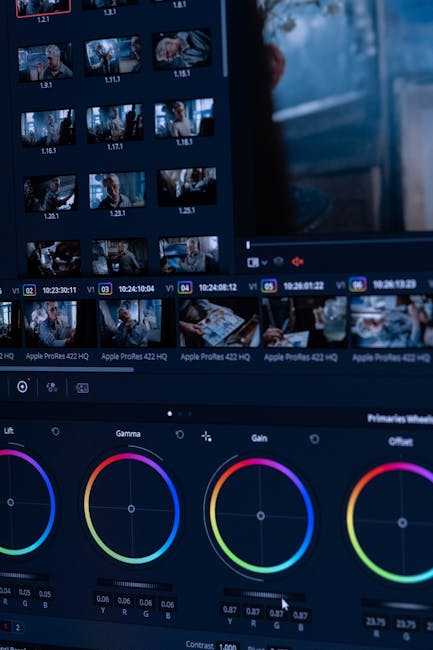Autonomous AI Researcher: OpenAI’s Timeline to 2028 Explained
OpenAI has publicly outlined an ambitious roadmap that anticipates rapid advances in deep learning systems over the next few years. Company leaders have described a two-phase path: an intern-level AI research assistant targeted for roughly September 2026, followed by a more capable, fully automated “autonomous AI researcher” by 2028. This post synthesizes those claims, explains the technical levers involved, evaluates implications for science and industry, and offers practical next steps for researchers, policymakers, and organizations.
What is an “autonomous AI researcher”?
An “autonomous AI researcher,” as framed by OpenAI leadership, is a system capable of independently delivering on large research projects. It would plan experiments, analyze literature and results, iterate on hypotheses, and coordinate computational and data resources with minimal human oversight. This concept spans several capabilities:
- Long-horizon reasoning and multi-step problem solving.
- Autonomous experiment design and execution (in silico and, where applicable, in the lab).
- Ability to synthesize and extend prior scientific literature.
- Robust evaluation and safety checks to avoid producing harmful or misleading outputs.
What timeline did OpenAI propose?
Company leaders indicated two milestone targets:
- An intern-level AI research assistant by around September 2026 — effectively a tool that augments junior researchers and performs increasingly complex research tasks under supervision.
- A fully autonomous AI researcher by approximately 2028 — a system that can lead and execute larger research projects with little human direction.
Those dates are presented as internal planning horizons rather than fixed delivery guarantees. They reflect a mixture of current model performance trends, expected algorithmic progress, and plans to massively scale available compute for “test-time” problem solving.
How can models reach that capability?
Two broad technical strategies underpin the roadmap:
1. Algorithmic innovation
Improvements in architectures, training objectives, and learning paradigms will continue to raise model capability. Innovations that improve reasoning, long-context retention, symbolic manipulation, and grounded multimodal understanding are particularly important. Advances in sample efficiency, continual learning, and safer model alignment are equally critical to ensure powerful systems behave as intended.
2. Scaling test-time compute
OpenAI emphasizes not just larger training runs but dramatically increasing computation devoted to problem solving during inference or “test time.” The idea is simple: allow models to spend far more computational resources — and thus time — thinking through complex tasks. In practice, this can mean chaining reasoning steps, using external tools and environments, and dedicating larger compute clusters to single problems when warranted. Proponents argue this extends the effective planning horizon and enables breakthroughs on difficult scientific challenges.
Why would test-time compute matter?
Many complex research tasks require extended reasoning, iterative hypothesis testing, and synthesis across diverse data types. Short, shallow passes by a model may match human performance on benchmark tasks, but deeper, longer deliberation can reveal solutions that emerge only after many inference steps or searches through large combinatorial spaces. Treating compute as a time budget — sometimes dedicating entire clusters to a single high-value problem — could accelerate discovery on hard scientific questions.
What are the benefits if the timeline holds?
If reliable, autonomous research systems become available, potential benefits include:
- Faster scientific discovery through high-throughput hypothesis generation and testing.
- Acceleration of drug design, materials science, and complex simulations that currently require weeks or months of human labor.
- Democratization of expertise by enabling smaller organizations to access advanced research capacity.
These outcomes could transform industries and research ecosystems, mirroring how automation reshaped prior fields — but at a much larger and faster scale.
What are the key risks and governance challenges?
Powerful autonomous research systems also introduce meaningful risks that require proactive governance and technical mitigation:
- Misdirected or unsafe research outputs, especially in dual-use domains like biosecurity.
- Concentration of capability and infrastructure in a few organizations with vast compute resources, creating competitive and systemic risks.
- Economic disruption in research labor markets and downstream industries.
- Verification, reproducibility, and attribution challenges if autonomous systems produce novel findings.
Addressing these concerns means coupling capability development with robust safety engineering, transparent governance, and coordinated policy frameworks.
How is governance evolving alongside capability?
Leaders discussing aggressive timelines also emphasize governance changes to balance rapid development with oversight. A two-part governance approach is commonly proposed:
1. Organizational controls
Adjusting corporate structures and funding pathways to support long-term research while retaining a mission-oriented oversight body is one method. Entities aiming to align incentives across profit-driven scale-up and public-interest oversight may create hybrid frameworks where research direction is governed by independent foundations or trustees while operational arms secure capital and infrastructure.
2. Technical and safety investments
Investing in alignment research, red-teaming, external audits, and multi-stakeholder safety initiatives helps detect and reduce emergent harms. External, independent review of high-risk projects and staged access to advanced capabilities are practical measures to limit misuse while enabling beneficial work.
How should researchers, organizations, and policymakers respond?
Preparing for a future where autonomous research agents are a real possibility requires coordinated action across sectors. Recommended steps include:
- Prioritize funding for alignment, reproducibility, and verification research to close safety gaps before broad deployment.
- Develop standards and best practices for auditing machine-generated research outputs and attribution protocols.
- Promote distributed access to compute and data through partnerships and shared infrastructure to reduce concentration risks.
- Create regulatory sandboxes and staged deployment frameworks for high-impact domains like biology and materials science.
How credible are these projections?
Industry timelines should be read with cautious skepticism. Predicting breakthroughs is notoriously difficult, and the pace of innovation often depends on unforeseeable algorithmic discoveries and access to vast infrastructure. That said, concrete improvements in reasoning benchmarks, multimodal understanding, and extended-context capabilities lend credibility to accelerated timetables — especially when paired with strategic investments in compute and software orchestration.
What questions should journalists and the public ask now?
To improve public understanding and oversight, stakeholders should seek clear answers about:
- Specific capability metrics: what exact tasks mark “intern-level” versus “autonomous researcher” performance?
- Safety thresholds and validation procedures before systems are given autonomous control over experiments or high-stakes decisions.
- Transparency around compute commitments, partnerships, and governance controls that shape who benefits and who bears risk.
These questions help translate broad promises into measurable milestones and accountable practices.
Want a quick comparison?
Here’s a side-by-side summary for clarity:
- Intern-level AI assistant (2026 target): Augments junior researchers; requires human oversight; useful for literature reviews, code drafting, data cleaning, and experimental planning.
- Autonomous AI researcher (2028 target): Leads larger projects, conducts iterative experiments, synthesizes novel results, and can operate with minimal human direction — subject to safety constraints.
How does this relate to current work on AI memory and tooling?
Longer-horizon reasoning and effective memory systems are foundational to autonomous research agents. Advances in contextual memory solutions and tools that let models access structured knowledge over extended sessions will be essential. For additional background on contextual memory innovations that support extended reasoning, see our coverage of Supermemory: Revolutionizing AI Contextual Memory Solutions.
Similarly, broader discussions about the future of model scaling and new paradigms are relevant; explore our analysis in The Future of AI: Beyond Scaling Large Language Models.
And for a primer on recent model releases and platform roadmaps that shape capability expectations, review OpenAI Unveils Advanced AI Models at Dev Day.
Final assessment
OpenAI’s projected timeline is a provocation and a planning signal: it telegraphs where the organization expects to invest talent, capital, and infrastructure. Whether the dates hold, the core thesis is clear — combining algorithmic progress with vastly greater problem-solving compute could yield systems that dramatically change how research is conducted.
That prospect offers extraordinary upside for accelerating discovery, but it also amplifies risks. The choice ahead is not binary; it involves pacing capability development, investing heavily in safety and governance, and widening access to prevent dangerous concentration of power.
What should you do next?
If you are a researcher, policy-maker, or technology leader, consider these immediate actions:
- Audit your organization’s exposure to advanced AI capabilities and upskill teams in alignment and safety practices.
- Engage with cross-sector coalitions to define standards for auditability, attribution, and staged access.
- Support open research into reproducibility, verification, and model interpretability.
Proactive engagement today increases the likelihood that tomorrow’s autonomous research tools will be deployed responsibly and equitably.
Get the latest analysis and join the conversation
Follow Artificial Intel News for continuing coverage of capability milestones, governance developments, and technical deep dives. Subscribe to our newsletter and share this analysis with colleagues working on alignment, research infrastructure, or policy.
Call to action: If your team is working on alignment, compute policy, or verification tooling, reach out to collaborate — join the effort to shape safe, beneficial research automation.






